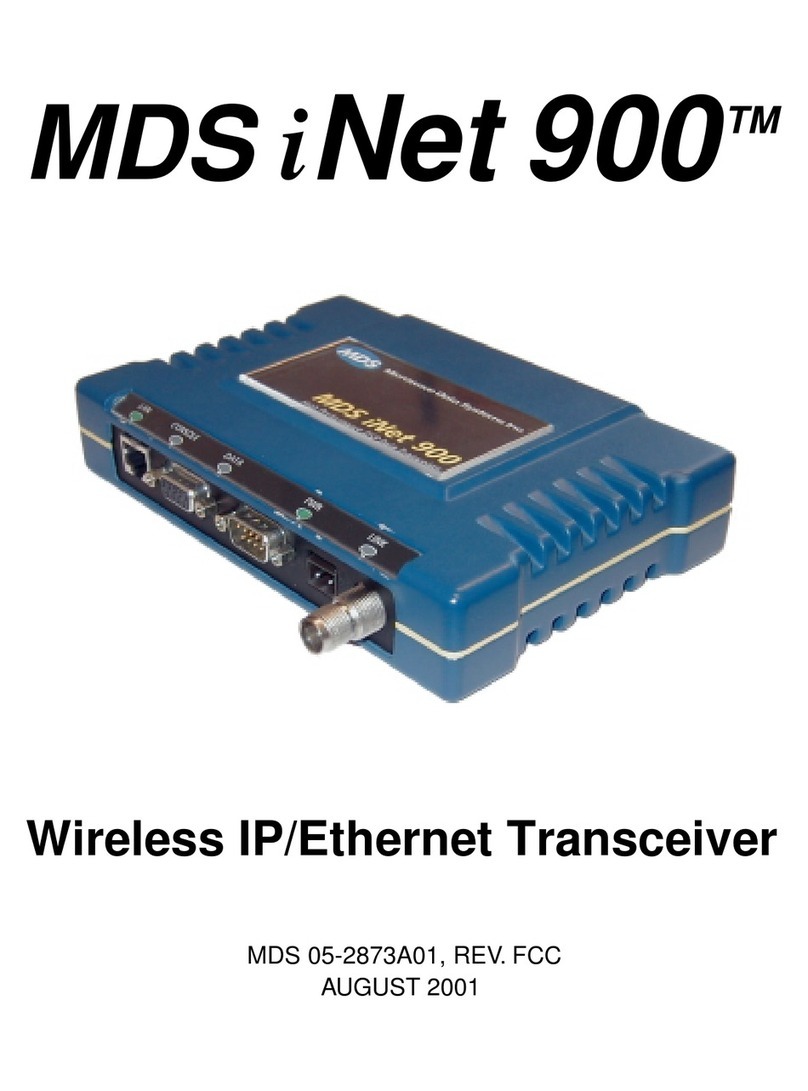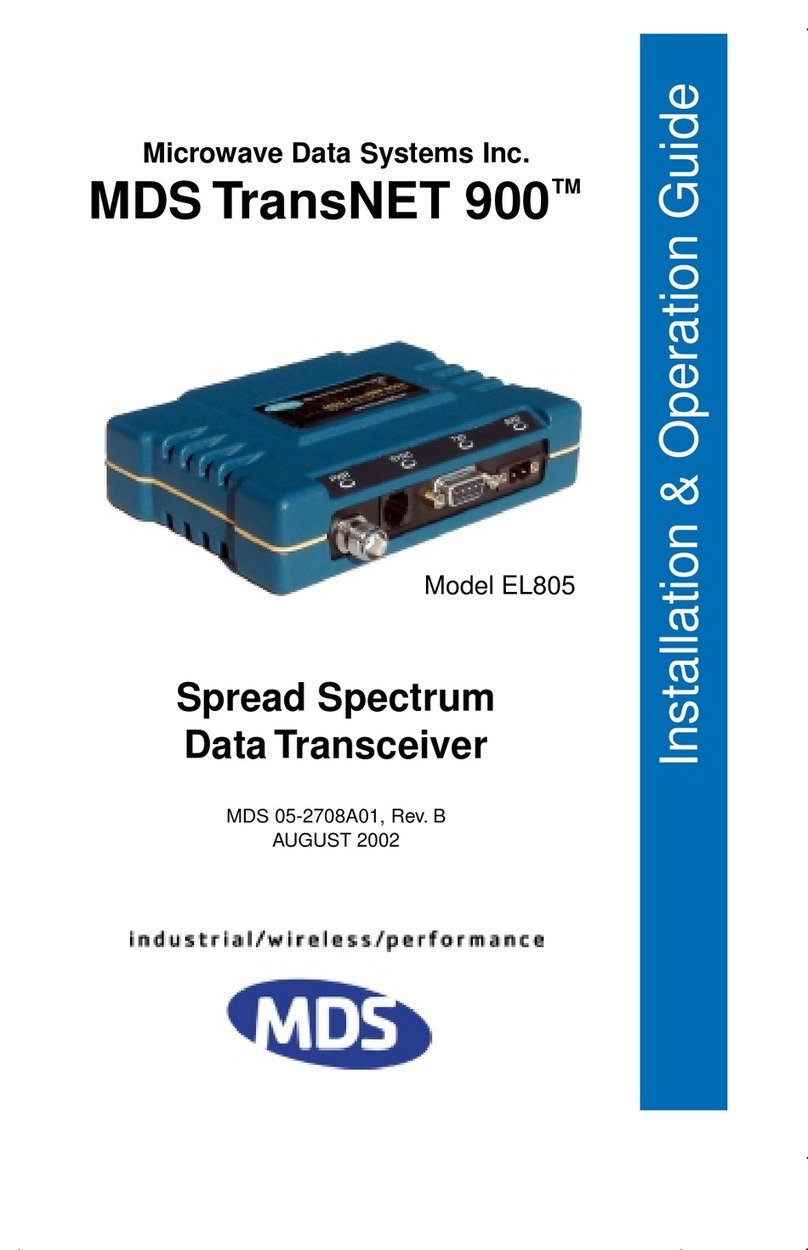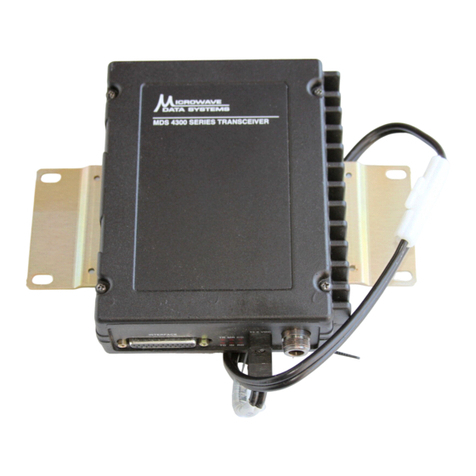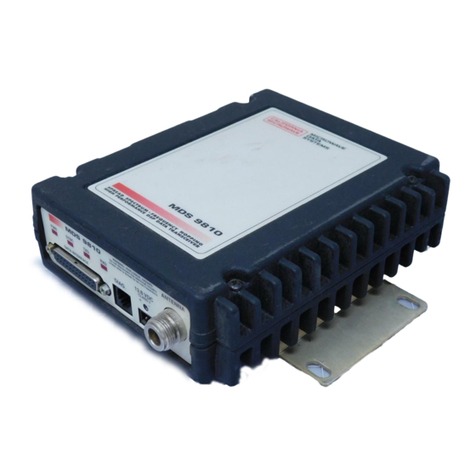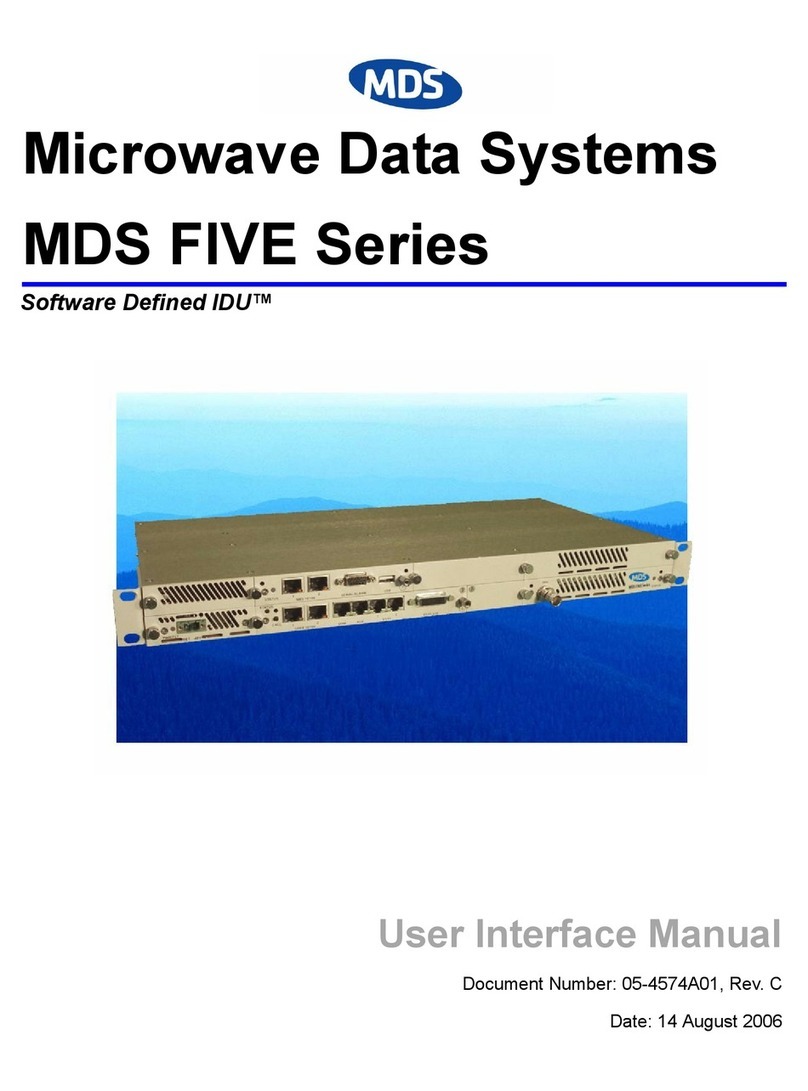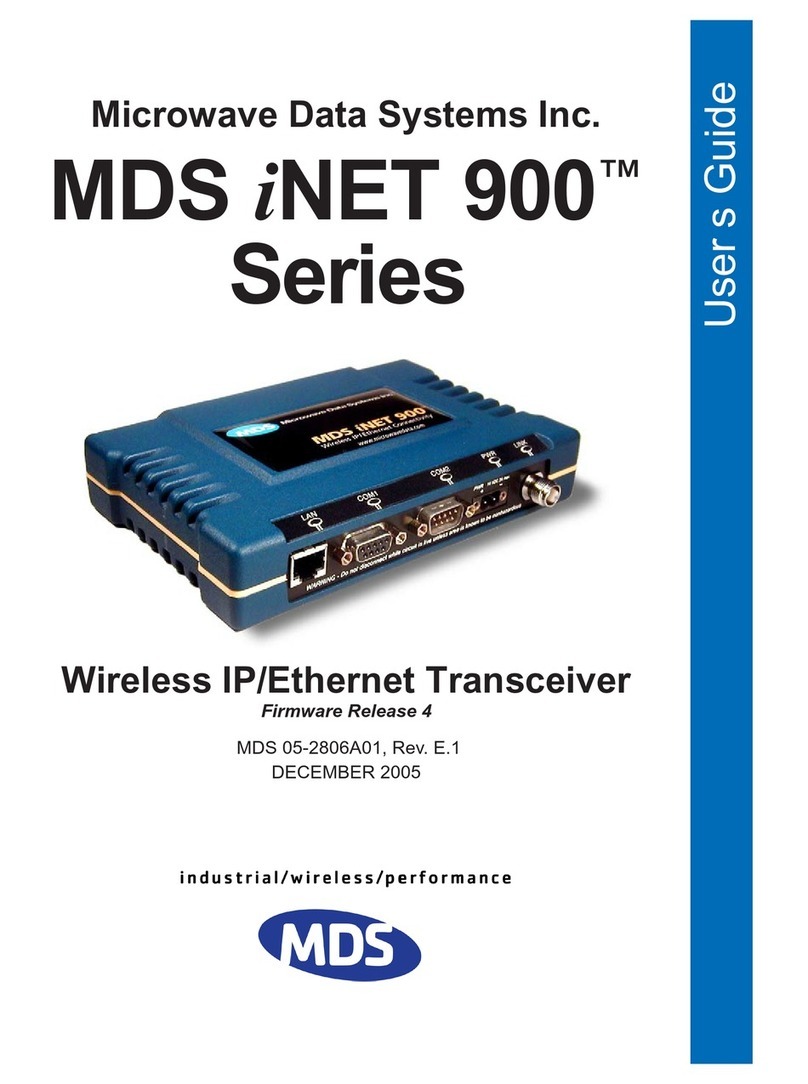
iv MDS entraNET 900 System Guide (Preliminary) MDS 05-4055A01, Rev. A
Copyright Notice
This publication is protected by U.S.A. copyright law. Copyright 2003, Microwave Data Systems, Inc. All rights
reserved.
ISO 9001 Registration
Microwave Data Systems adheres to the internationally-accepted ISO 9001 quality system standard.
Related Documentation
Installer Guide
—The associated MDS
entra
NET 900 Installer Guide, P/N 05-xxxxA01 (pending), is provided with
the transceiver and is limited to essential information for installers. It assumes a basic level of understanding of the
material in this manual, including antenna selection, the use of radio communication site survey tools and techniques,
and network design.
Related Materials on the Internet
—Data sheets, frequently asked questions, case studies, application notes, firm-
ware upgrades and other valuable information are available on the MDS Web site at www.microwavedata.com.
About Microwave Data Systems Inc.
Almost two decades ago, MDS began building radios for business-critical applications. Since then, we’ve installed
more than 500,000 radios in over 110 countries. To succeed, we overcame impassable terrain, brutal operating condi-
tions and disparate, complex network configurations. We also became experts in wireless communication standards
and system applications worldwide. The result of our efforts is that today, thousands of utilities around the world rely
on MDS-based wireless networks to manage their most critical assets.
The majority of MDS radios deployed since 1985 are still installed and performing within our customers' wireless net-
works. That’s because we design and manufacture our products in-house, under an ISO 9001 registered quality system
which allows us to control and meet stringent global quality standards.
Thanks to our durable products and comprehensive solutions, MDS is the wireless leader in industrial automation—
including oil and gas production and transportation, water/wastewater treatment, supply and transportation, electric
transmission and distribution and many other utility applications. MDS is also at the forefront of wireless communi-
cations for private and public infrastructure and online transaction processing. Now is an exciting time for MDS and
our customers as we look forward to further demonstrating our abilities in new and emerging markets.
As your wireless needs change you can continue to expect more from MDS. We'll always put the performance of your
network above all. Visit us at www.microwavedata.com for more information.
Manual Revision and Accuracy
While every reasonable effort has been made to ensure the accuracy of this manual, product improvements may result
in minor differences between the manual and the product shipped to you. If you have additional questions or need an
exact specification for a product, please contact our Customer Service Team using the information at the back of this
guide. In addition, manual updates can often be found on the MDS Web site at www.microwavedata.com.
